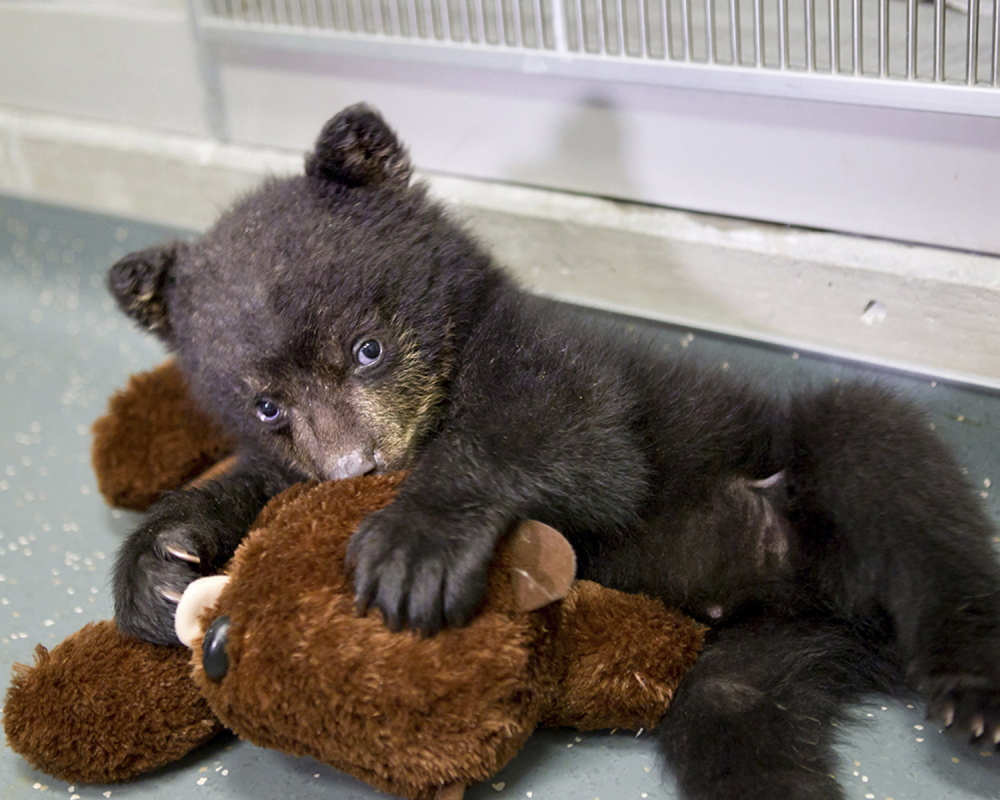While the hearts of defenders of endangered animal species may beat strongly for every miniscule fish, amphibian or bacterium facing doom, they know that the way to sell their preservation to the public at large is to use large mammals everyone already values as the featured attractions of their campaigns.
It’s always better, too, if those critters have cute and cuddly appearing cubs, kits or pups whose pictures can drive the public relations effort — even if the adults of the species would cheerfully rip off your face if you so much as touched one of their adorable offspring.
There’s even a name for this public relations tactic: It’s called promoting “charismatic megafauna” as stand-ins for a much larger number of less-appealing species.
And Maine’s black bears are the current charismatic example.
True, Ursus americanus isn’t endangered (far from it; worldwide, black bears are the most common species of bear). But they are big mammals, their cubs look cuddly (nearly every kid has a soft and fuzzy teddy bear toy), and people generally are happy they exist.
So, if you’re ginning up a campaign to demonize hunters and their sport in general, the place to begin, using the same logic the endangered species advocates use, is with a sizeable charismatic beastie — Maine’s black bear.
Thus, for the second time in a decade, Mainers will vote on a referendum to ban hunting black bears with bait, dogs or traps.
The campaign counts on most people thinking about “typical” hunters as actively prowling the woods in search of an elusive quarry, while portraying as “unfair” other hunters who sit in a single spot while drawing their prey to them, or use dogs to track them, or set traps to snare them.
But this ignores duck hunters, who also hide in blinds, using decoys instead of bait, but still honking madly on their Duck Commander calls to draw unsuspecting wildfowl down to their destruction. Many use dogs to retrieve their kills.
Upland bird hunters also use dogs to flush quail, grouse or pheasant out of hiding and retrieve them.
Coon hunters? Dogs again. Indeed, most anthropologists think the value of canines in hunting is precisely why wolves were first domesticated and bred into dogs, beginning about 15,000 years ago.
Our pampered Pekingese and poodles owe their very existence to the sturdy retrievers, terriers, spaniels, hounds and other breeds that proved their usefulness to humanity — and continue to do so today.
In addition, a fair number of Mainers still make a decent living, or at least supplement one, by trapping animals that remain prolific in Maine forests and rivers.
So mounting an attack on hunting techniques that lure animals to hunters, or use dogs to track them, or traps to capture them, is really an attack on all sorts of hunters pursuing all sorts of animals under all sorts of conditions.
If Mainers can be persuaded that hunters can’t use these tactics for bears, it is a very short step to arguing they shouldn’t use them for many others.
Bears are a smokescreen; the real target is hunters — all of them.
Is that the kind of precedent Mainers, whose outdoor traditions extend back generations, really want to set?
That’s the main point, but there’s a secondary one: Hunting bears over bait, or with dogs, or with traps, are far more effective methods of keeping their numbers within manageable limits than chasing them around the woods.
Not only do Maine’s wildlife biologists agree, but as a front-page story in last Sunday’s newspaper noted, states that have passed similar measures as the one coming up this fall have experienced growth in their black bear populations to the point where the animals have become a nuisance — and a potentially dangerous one.
In Oregon, the story reported, bear populations grew 40 percent, and in Massachusetts, it was a whopping 700 percent.
Even with baiting, hounding and trapping, Maine’s bear population has grown, too, swelling 35 percent since 1999. There are now an estimated 31,000 in Maine, “one of the largest black bear populations in the lower 48 states,” according to Maine bear biologist Jennifer Vashon.
Reports from states with swelling bear populations reveal that not only do bears raid backyard bird feeders and garbage cans, they show up on city streets and suburban roads, greatly increasing the chances of conflict with people.
The state of Washington says “black bears are the most common source of potentially dangerous complaints,” Colorado says they “have become a high priority game management issue,” Massachusetts says “there are constant complaints about bear encounters” and Oregon has seen several bills introduced to restore the now-banned methods included in the Maine referendum.
Mainers turned this exact measure down in 2004, by a 53-47 margin. Let’s make its defeat even more decisive this time.
M.D. Harmon, a retired journalist and military officer, is a freelance writer and speaker. Email at: mdharmoncol@yahoo.com.
Send questions/comments to the editors.




Success. Please wait for the page to reload. If the page does not reload within 5 seconds, please refresh the page.
Enter your email and password to access comments.
Hi, to comment on stories you must . This profile is in addition to your subscription and website login.
Already have a commenting profile? .
Invalid username/password.
Please check your email to confirm and complete your registration.
Only subscribers are eligible to post comments. Please subscribe or login first for digital access. Here’s why.
Use the form below to reset your password. When you've submitted your account email, we will send an email with a reset code.